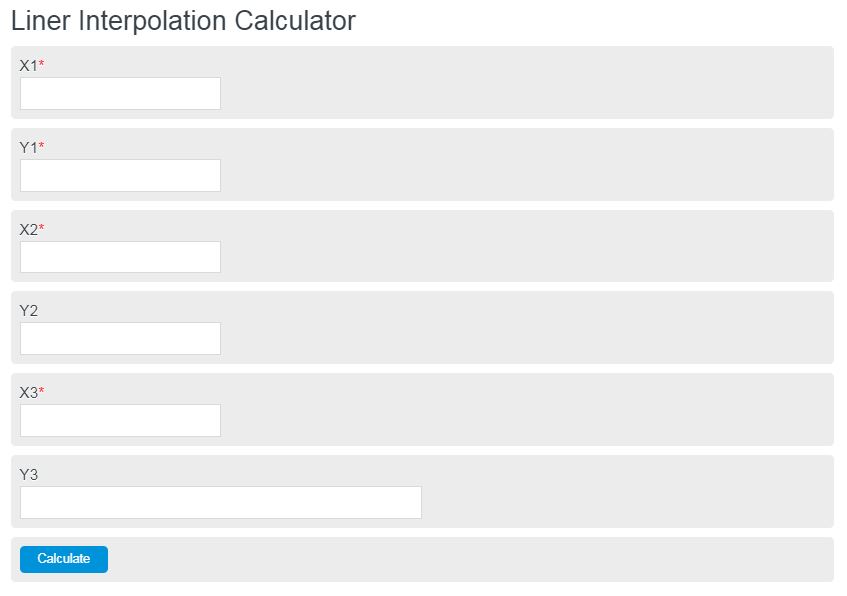Enter two points along a line (X1,Y1) (X2,Y2), as well the final X (X3) coordinate to interpolate the final Y position of that point. Linear interpolation uses the known coordinates and slope to calculate the unknown point.
Interpolation Formula
The following formula is used to calculate a linear interpolation.
y3 = y1 + (X3-X1) *{(y2-y1)/(x2-x1)}- Where Y3 is the missing value of the interpolation
- X3,X2,X1 are coordinate points
- Y2,Y1 are known coordinate points
Linear Interpolation Definition
Interpolation is defined as the extrapolation of data using past data. For instance, in stock you could say the price has raised 10% over the last year, therefore, you’re going to extrapolate that the stock will rise 10% over the next year as well. In reality, this might not be true, but it is an example of using past data to interpolate.
Linear Interpolation specifically refers to the extrapolation of data across a linear line. For example, let’s say you have 2 points (X1, Y1) (X2, Y2). These two points represent a line. Now let’s say you want to extend that line out to a new point, say X3. You can calculate the value of Y3, by multiplying the slope of that line by X3, or in other words Y3=slope*X3 where the slop is (X2-X1)/(Y2-Y1). This is an example of linear interpolation.
As you can see, you can interpolate the data point of Y3 or X3 by altering the equation. As long as you have the slope of a line and two points along that line, you can determine the final destination of any point given the X or Y coordinate.
How to perform a linear interpolation?
Performing a linear interpolation is as simple as using the equation above. First, find the known coordinate points, then plug the values into the calculator or formula.
FAQ
Interpolation is defined as the extrapolation of data using past data.

